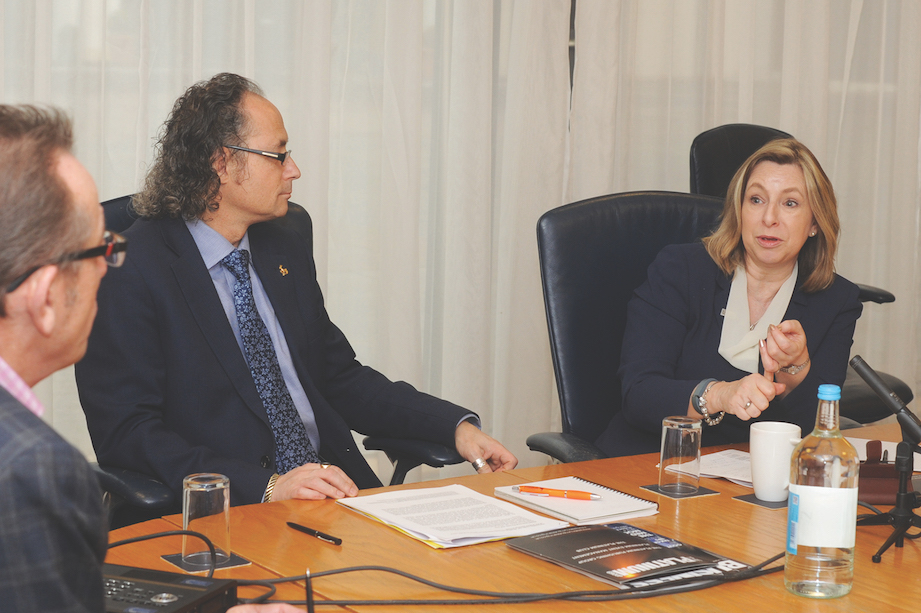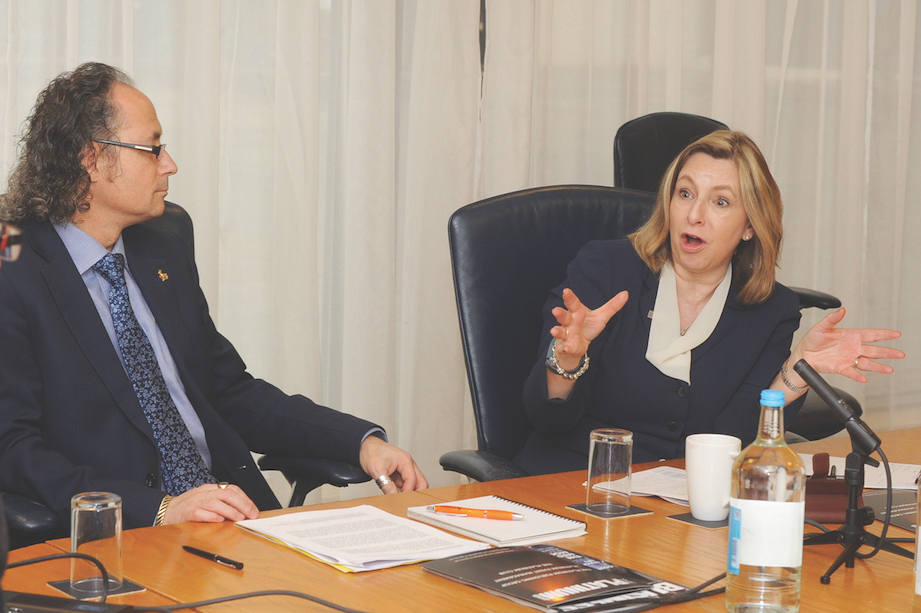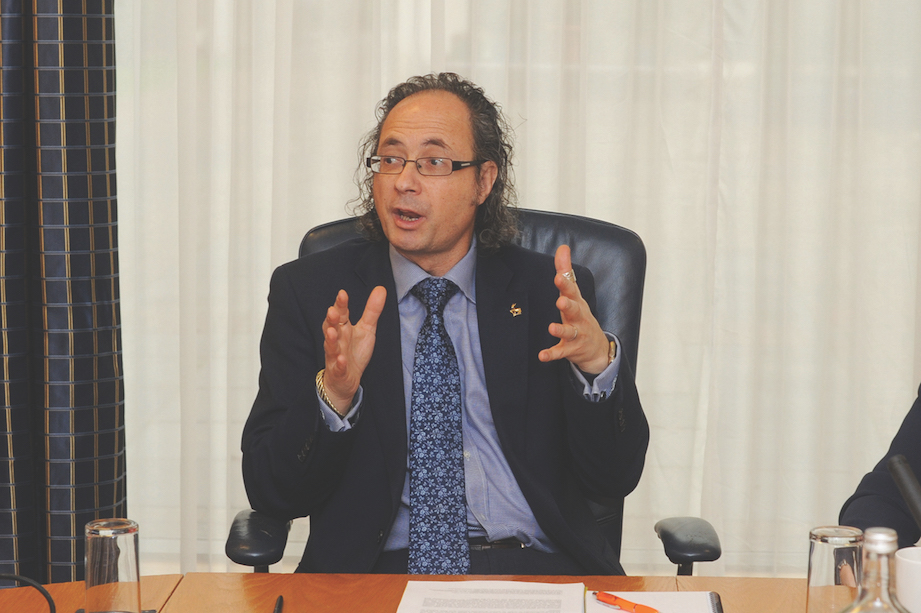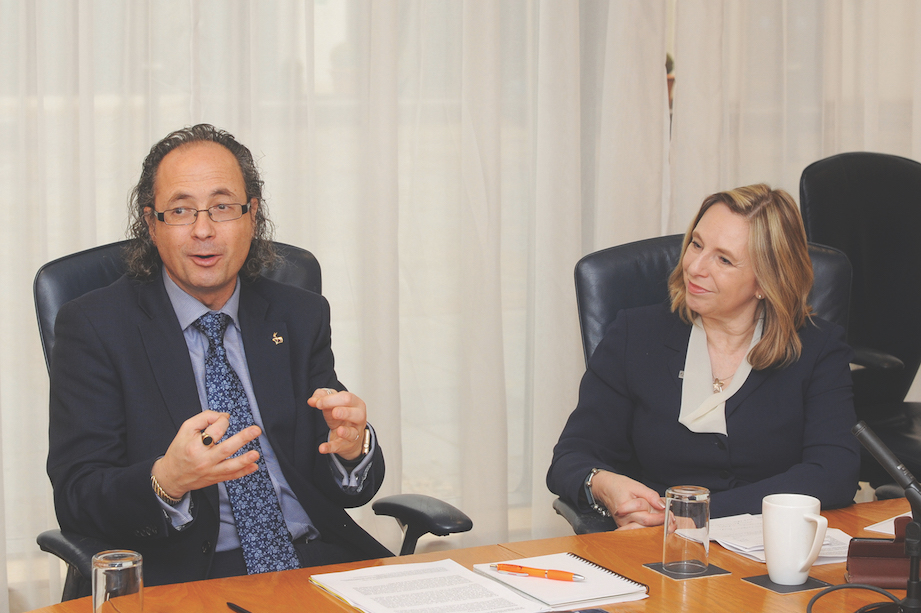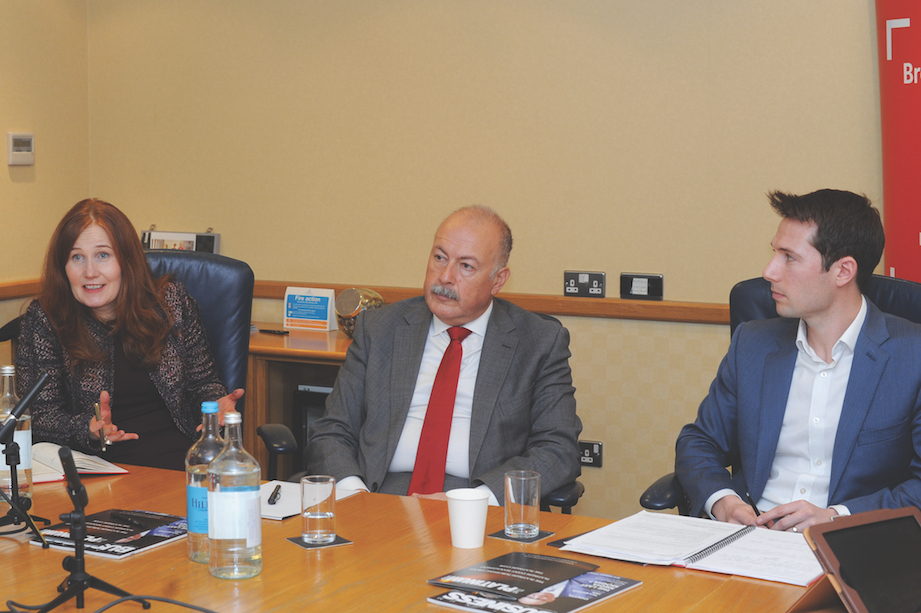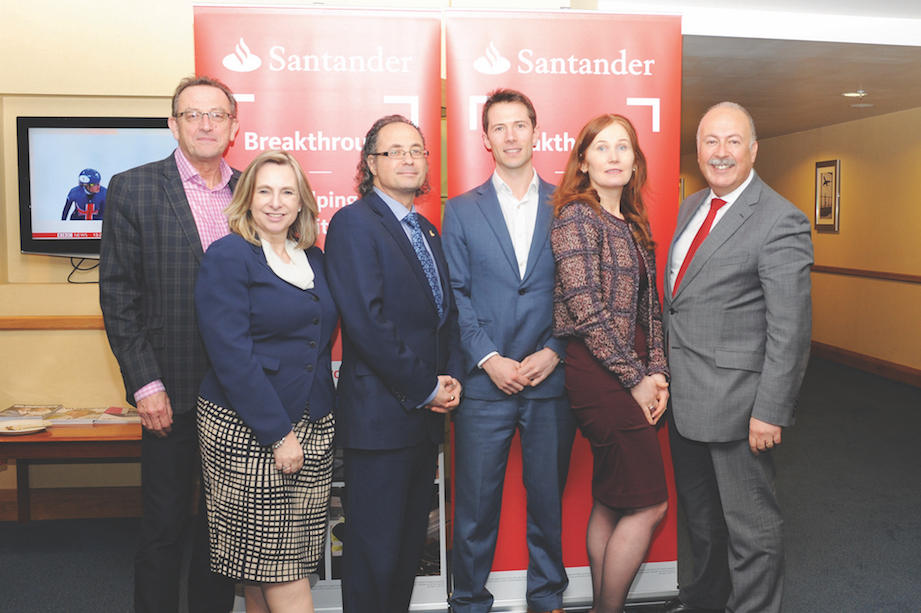
The second part of the debate looks at how businesses can retain staff, help returning parents, retrain older staff - and the effect of Brexit
The Debate Panel
CB – Colin Berkeley, Regional Director, Santander Business
SD – Susan Davies, Commercial Director Santander Business
LE – Laurence Emmett, Director Cranleigh Recruitment
VF – Viki Faulkner, Head of Apprenticeships, University of Brighton
KH – Keith Herrmann, Director of Employability and Careers, University of Surrey
MH – Maarten Hoffmann, Facilator and chair
THE DEBATE- Part 2
How can businesses retain staff?
SD: At Santander we champion talent assessment, looking at the talent within our business, understanding the career aspirations and then doing something about it. As a manager you can spend an awful lot of time focusing on the people who need support or who are maybe not performing as expected, but the people who are getting on with the job can be forgotten and they can become disenfranchised quite easily.
Supporting career development with ongoing learning or working with them to get them onto the next step of their career is very important. People can often only see quite a linear path. We are looking at succession in the business, because it’s expensive to go out and recruit. It has to be better to find the talent within rather than going outside. We have to give the right signals in terms of culture and talent retention.
LE: The major reason why people look to move is not for money - it’s for development and because they found that they’ve plateaued in their business and the company they’re working for can’t offer them anything more. They might have a job that fits a certain structure but they grow beyond that structure – and that person will eventually leave. Most companies are aware of this so it’s about continuously reminding your team what the next step is for them and making sure that they actually want to go there.
A company should be paranoid about losing their own staff. They should really care about that. We’re terrified of it. We’ve got a team of moderately experienced recruiters now, we’ve trained them all up from scratch, and to lose them now would be devastating. We’d have to
start again. So we continuously remind them, two years from now where can you be? We’ve actually just done vision boards where you cut loads of magazines up and cut articles apart and they put on all the things they want to achieve personally and with us in the next two years. We do it every year. We need to make sure that they’ve got a path forward with us.
Do we overlook older employees and returning mums?
LE: If someone is looking to change career at a later age, it’s really tough to start again, but age is irrelevant generally.
It depends on the sector. We tend to recruit people over 50 into the Health & Safety sector, where there’s a real dearth of talent in the younger age group.
If it is a physical role and the applicant is unable to perform the tasks, then age will be an issue but that would be more down to a health check rather than your age. We have an ever-expanding ageing population and I think there needs to be more creativity when it comes to working with an older generation. As far as older applicants are concerned, they need to be agile and be willing to ‘unlearn’, rather than saying: “This is how I used to do things.”
CB: We welcome flexible working that suits parents, though in certain parts of our business it is easier to accommodate their needs. For example, in a bank branch, a ‘ten-to-two’ employee works really well because the lunchtime period in branches is often a busy time and it allows full-time staff to take a lunch break.
As an employer in general we are very keen to be flexible and accommodate variable hours. We’ve got a responsibility to do this and it’s a good way of retaining people and it shows we want to support our people and means that we have a good work culture.
SD: Many women who want to come back into the workplace are comfortable with the convenience of working in a branch-type environment, but it’s also about how they can develop and have real opportunities. It may start with a returning mum wanting to work a few hours a week, but they also want to get back into their careers and we want to offer flexibility. The technology now means people don’t have to be in an office all the time.
KH: Smaller companies often still have a very conventional view about the workforce. We need to re-think and re-configure how people engage with work. The crucial thing is the signals that we give people. If we don’t help people understand that this business is open to women who want to go to managing the family process then people just won’t bother. If we don’t say to the older generations that they have value and that value is recognised and rewarded, then we lose that talent.
LE: That talent does have to re-invent itself and I see that just in reading CVs. Sometimes I look at a CV from someone of an older generation and think “That needs a lot of work.” Straightaway it is apparent that this person hasn’t kept up with the times. You need to make sure you are computer savvy, understand what social media is and be aware of all the modern tools that are required of the modern workplace in order to stay competitive. Ultimately you’re losing competitive edge if you’re letting the world get ahead of you.
KH: I would suggest employers have a responsibility with those categories of employees to help them re-purpose, re-configure and re-train. Most folks who fall into this mature category have not written a CV for 15, 20, 30 years. Expecting them to understand how a 21st century CV works is wholly unrealistic.
LE: If you go on Google you can find out how to write a CV within seconds and that shows straightaway whether you’re trained to work in the modern workplace. If anybody says to me “I’m not sure how to do this anymore”, I would say you’re lazy because you can find that out in three seconds on your computer or on your phone. It proves the argument: If you haven’t got the tools to find out how to do something properly then maybe you’re not aware of what the tools are and you need to get trained in these things.
VF: It’s really important people have access to lifelong learning opportunities. We can’t just put everything down as the responsibility of an employer. It has been upsetting and disappointing to witness the huge dip in lifelong learning and part-time learning that we’ve seen over the last decade or so. There has been a 58% fall in part-time learning across both HE and FE since 2010 and that’s been a real disadvantage for people who are trying to come back into the workplace.
Is the apprenticeship system fit for purpose? Are apprenticeship wages set so low that a young person who has parents who cannot support them can simply not afford to do an apprenticeship?
VF: Where we have a misunderstanding is that there is an apprenticeship minimum wage which is set at £3.50 per hour, just as we have a national minimum wage which is set at £5.60 an hour. The fact that the government says you must pay an apprentice the minimum wage of £3.50 an hour is a safety net. Most employers in most sectors will pay more than that and will pay at least the minimum wage.
It is a training salary. These people have to be employed by you as an employer, paid a salary but have a minimum of 20% off the job training, so you’re supporting them in that way.
Of course, some people are paying £3.50 an hour – personally I don’t think that’s a good employer, so I would shop around to find someone who pays more.
KH: The emphasis on apprenticeships is a major and very positive development by the government. For two or three decades, employers have simply not invested in their people. That’s why we sit with the problems that we have today in the economy. It’s a very positive thing that employers are obliged to pay the Apprenticeship Levy.
Some employers just consider this to be an extra tax and others have bought in apprentices without really thinking about the requirements of their business.
But many companies think strategically about where they can invest in apprenticeships from Level 2 all the way through to degree apprenticeships. There are niggles and bureaucratic processes, but it offers employers the ability to take a major step change in being more proactive about investing in their workforce. And that can only be a good thing for the competitiveness and the productivity of their business.
VF: It’s not just about bringing new talent into your organisation. You can use apprenticeships to upskill your existing workforce. You can now do a senior leadership Level 7 apprenticeship which would include the MBA programme.
SD: We’re looking at our internships as a whole because they have tended to come from business and finance degrees. However, our operating model is very diverse. We need good technicians, we need people with digital and IT skills and actually probably want to attract as many graduates from engineering backgrounds, for example.
CB: We support Santander partner universities with their internship and apprenticeship programmes. Internships and apprenticeships give candidates a real life experience and helps them with employability. We have a social responsibility in the community that we operate in to support and help people. The intern programme isn’t only open to Santander customers. So if you’re an SME in the marketplace, you bank with another bank but you’re interested in having an intern that is partly funded by Santander, you can also apply.
VF: The internships that Santander has been sponsoring with our students have been such a bonus for SMEs. It’s really valuable.
We recognise that students will need to build up the skills of entrepreneurship. Many of them will actually not be coming out and looking for a traditional job but might want to work for themselves and start up their own business. And even if they don’t, those entrepreneurial skills might kick in later, particularly as a woman returnee you might be looking at a different way back into the job market.
Are the young people from the Google generation more likely to create their own start-ups?
VF: We have over 300 students a year going to our business start-up classes and last year we had more than 100 new businesses spinning out of student projects. Part of that is because we have a large creative media art school. They often need to be self-employed. They may be brilliant artists or theatre practitioners but have no understanding of how to write a balance sheet or a pitch.
CB: The entrepreneurship programmes at universities are often an add-on to the course they’re doing. I’ve been involved in the ‘Start-up business journey’ at the University of Kent where they run a series of lunchtime or evening lectures on finding an idea and how to bring it to life. We talk about different sources of finance and we get involved with Dragon’s Den events. The students are really very engaged in it.
SD: There is also a growth in multiple careers. Someone may be a web designer/yoga instructor/lifestyle guru all wrapped into one – a collection of micro careers.
LE: With the future of automation shadowing over us I’d say that’s the best way for people to adapt to the world of work of the future. A long way ahead, beyond what we can see now, there is going to be a completely different working environment for most people. So I think it’s a good thing that people are more flexible and they can change.
How are we coping with new ways of working?
VF: Building comfortableness with remote working is really important. We still haven’t lost the notion that presentee-ism is more important than the actual productivity.
SD: We’re in a transitional phase. You always have multiple generations in the workplace but the generation coming through has got a very different way of working and different expectations. We need to get the very best out of both ways of working and that’s what we’re all wrestling with a bit at the moment.
VF: We do find ourselves in a transition period and sometimes it isn’t easy to adapt. There’s a large team that sit outside my office that is supposed to be very outward-facing and it’s actually wrong when they’re all there. But I equally feel as disturbed inside when there’s nobody there all day. I can’t help myself thinking: “Where are they?”
It’s even harder for older generations. I usually work from home on a Friday, and my father just can’t understand what I would be doing at home. It is totally alien to him.
KH: Managing remote working is a skill and it’s a capability that organisations can’t just organically develop. You’ve got to work at it to ensure timelines and project targets are met. It doesn’t just happen magically.
How will Brexit affect the future of employment, talent acquisition and recruitment?
KH: The uncertainty at the moment is massively unhelpful for the university. We’re having to constantly reassure our staff, which is a great tragedy. It’s shocking, the lack of political courage that the current government has with regard to Brexit. It’s so narrow-minded and it’s not globally orientated at all. They keep talking about all these global trade deals. Nonsense! Not if they’re portraying the kind of mindset that they have.
There are major concerns around recruiting international students. Numbers are down across the sector already as a whole, and the crude reality is that international students subsidise British students.
Universities are global by definition. They attract talent and people from different cultures, from different ways of life, from different countries.
Presumably there’s also a funding issue because there was a lot of European research money coming into universities.
VF: We’re a net gainer from EU research funding. Because of the quality of UK universities and the UK university research profile we attract a lot of funding from Europe and a lot of collaborative work is funnelled through here. We hope that that’s retained
It’s not only about the funding itself, it’s about whether we want to cut ourselves off. Do we want to only do research and development staring at our own navel. Collaborating as part of a European-wide network is so much better; the learning is so much faster.
SD: We’ve yet to see what the impact will be but I suspect there will be some, undoubtedly, and that is a real shame. We have diversity amongst our teams and that brings a richness and a real dynamic that. If we were to lose that, I fear for the business going forward.
LE: It’s business as usual right now. We’re just being asked to find people and we’re not being told to steer away in any way from Europeans. I think heads are buried in the sand waiting to see – and then there’s going to be a huge reaction.
CB: The only comfort I take is that, in my experience, there is a very strong desire for Europeans to come and work and live in the UK. There is a lot of talk about the UK having quite a weak bargaining position but actually we buy a lot of goods and services from Europe. I think it’s very much a two-way street and I am hopeful that they will find a way. Maybe they won’t call it freedom of movement but maybe it will be something under a different name; because Europeans want to come here.
We’re a very tolerant society and there’s a lot of opportunity here. And lots of people in the UK want to go and work in Europe as well. If movement is restricted too much, we’ll all be poorer for it.
Any SMEs interested in finding out more about the Santander SME Internship Programme, please contact
Colin Berkeley on colin.berkeley@santander.co.uk



